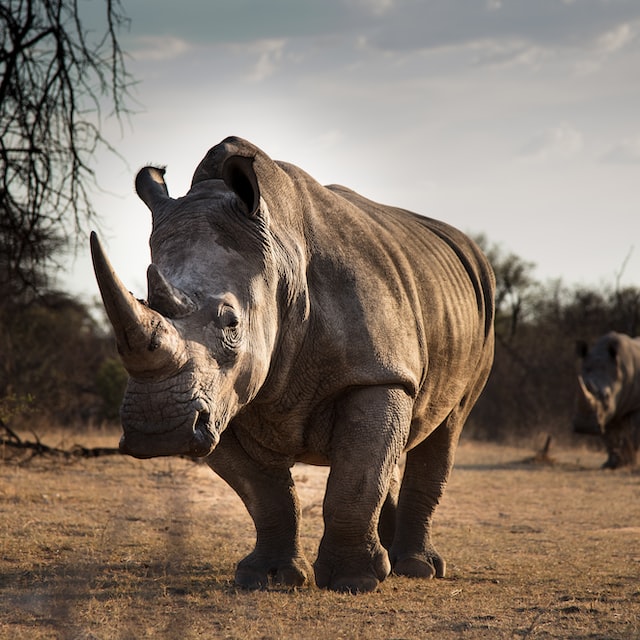White Rhinos
White rhinos are native to sub-Saharan Africa, with most living in South Africa. However, there is a small population of white rhinos living in Sudan. The largest population of southern white rhinos is found in protected areas such as the Kruger National Park and Hluhluwe Imfolozi Game Reserve.
White rhinos are native to sub-Saharan Africa, with most living in South Africa. However, there is a small population of white rhinos living in Sudan. The largest population of southern white rhinos is found in protected areas such as the Kruger National Park and Hluhluwe Imfolozi Game Reserve. White rhino horns are used for dagger handles and other ornamental objects. The horns are also believed to have medicinal properties, including the ability to cure cancer. Some cultures believe that rhino horns can be used as an aphrodisiac or fertility drug, although there is no scientific evidence of this claim.
The number of white rhino subspecies alive today varies between two and five depending on who you ask; there’s some disagreement about whether the northern white rhino should be considered a different species from its southern cousin or just another subspecies.
The last wild population of southern white rhinos in Sudan was estimated at just over 20 animals. They lived in the savannahs of South Sudan, which are now part of a country that has been ravaged by civil war.
The situation is so dire that the remaining rhinos were thought to have all been poached out of existence and this subspecies was declared extinct in 2011. White rhinos were first discovered in Sudan in 1925, but not until the 1950s did they become common enough to be considered a problem for local farmers. By the 1980s, there were an estimated 10,000 white rhinos living in Sudan. The survival of this subspecies is still threatened by habitat loss and poaching for their horns.
The southern white rhino was first discovered in South Africa in the 1800s. By 1960, there were only about 100 individuals left. Thanks to conservation efforts, the population has recovered and is now estimated at 20,000 animals.
What do white rhino look like?
White rhinos have two horns on their snout, which they use as a defense against predators. They also have a short tail and long legs.
What is the white rhinos scientific name?
The white rhinoceros is a member of the family Rhinocerotidae and genus Ceratotherium.
The white rhinos scientific name is Ceratotherium simum. The genus name, ceratotherium, means “horned beast” in Greek. The species name, simum, means “flat nosed” in Latin.
The white rhino has two subspecies: the northern white rhinoceros and the southern white rhinoceros. The southern white rhino has two distinct populations: the east African population (Ceratotherium simum simum) and the south African population (Ceratotherium simum cottoni). White rhinos have several names.
They are also called square-lipped rhinos, wide-lipped rhinos and hook-lipped rhinos. The scientific name for white rhinos is Ceratotherium simum cottoni.

How many white rhino are left in the world?
White rhinos are an endangered species. There are about 20,000 southern white rhinoceroses and 5,000 northern white rhinoceroses left in the world. The remaining population is fragmented, with some subpopulations surviving in as few as five or fewer locations in their range countries. There are only about 20,000 white rhinos left in the wild. The southern white rhino has been decimated by poaching and habitat loss. Southern white rhinos once roamed parts of South Africa, Namibia, Zimbabwe and Mozambique. They now live only in protected areas in South Africa.
The northern white rhinoceros is critically endangered with only two individuals remaining in the world—an elderly female named Nola (Namibia) and Sudan (Ol Pejeta Conservancy). According to the International Union for Conservation of Nature (IUCN), there are approximately 20,000 southern white rhinos in the world. The IUCN also estimates that there are 5,055 black rhinos and only 100 northern white rhinoceros left in their natural habitat.
How many white rhinos are left 2022?
The IUCN estimates that there are 20,000 white rhinos in the world. This number has decreased by 96% since 1960, when there were an estimated 1 million individuals. They are considered a vulnerable species by the IUCN due to habitat loss and poaching for their horns.
What are the two white rhinos called?
The two white rhinos are called the northern white rhino and southern white rhinoceros. The northern white rhinos are found in Central Africa. There are only three females left and they live at a zoo in Kenya. The southern white rhino is found mostly in South Africa and Zimbabwe.
Are white rhinos now extinct?
The northern white rhinoceros is considered “critically endangered” by the IUCN. The white rhino was last seen in the wild in 2007 and declared officially extinct in 2011. This means that they are in the most dire situation of all the categories of animals. There are only three remaining in the world only found in captivity. It is considered extinct in the wild.
There are only three females left and they live at a zoo in Kenya where they are protected from poachers by armed guards. There are no northern white rhinos living in the wild anymore.
The southern white rhino is considered near threatened because of habitat loss and poaching for their horns. The southern white rhino is classified as vulnerable due to habitat loss and poaching for their horns. The southern white rhino population is estimated to be at 20,000 individuals, which means that it’s still considered a threatened species. Both of these subspecies are on the Red List of Threatened Species published by the International Union for Conservation of Nature (IUCN).

